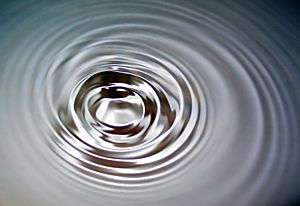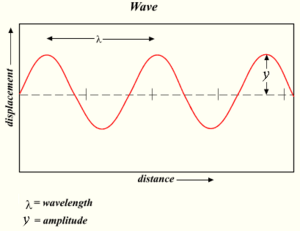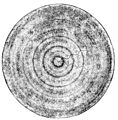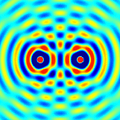Wave (physics) facts for kids
A wave is like a ripple or a wiggle that moves through space or stuff. It's a disturbance that carries energy from one spot to another. Think of it as a way for energy to travel without the actual material moving with it.
Contents
Examples of Waves
Waves are all around us in the natural world. Here are some common examples:
- Sound waves: These are what let us hear things.
- Water waves: Like the ripples you see in a pond or the big waves in the ocean.
- Seismic waves: These are the waves that cause earthquakes.
- Electromagnetic waves: This group includes many types of waves, like:
- Light waves: What we see with our eyes.
- Radio waves: Used for radios, Wi-Fi, and cell phones.
How Waves Work
Waves have special features we can measure. All waves can be thought of as being made up of simpler waves called sine waves.
We can measure different parts of a sine wave:
- Amplitude: This is how tall the wave is from its middle point. A bigger amplitude means more energy.
- Wavelength: This is the distance from one peak of a wave to the next peak.
- Frequency: This tells us how many waves pass a point in one second.
The highest point on a wave is called the crest. The lowest point is called the trough. The middle line, halfway between the crest and trough, is called the baseline.
Waves and Matter
Some waves need something to travel through, like air or water. For example, sound waves need air or another material to move. They cannot travel through empty space.
Other waves, like light waves, can travel through empty space. All waves carry energy as they move. Sometimes, waves also carry information, like when you listen to the news on the radio.
Usually, after a wave passes through something, that material goes back to how it was before. It's like a ripple in water; the water itself doesn't move far, but the ripple does. Scientists have also found that light can act like both a wave and tiny bits called "particles".
Types of Waves
Waves can be grouped by how they move:
- Transverse waves: In these waves, the particles move up and down, while the wave itself moves forward. Imagine shaking a rope up and down; the wave moves along the rope, but your hand moves up and down. Transverse waves have crests (high points) and troughs (low points).
- Longitudinal waves: Here, the particles move back and forth in the same direction as the wave. Think of a Slinky toy: when you push one end, the coils squeeze together and spread apart as the wave moves along. Longitudinal waves have compressions (where particles are squeezed) and rarefactions (where particles are spread out).
- Standing waves: These waves look like they are staying in one place, just vibrating up and down. They don't seem to travel.
- Travelling waves: These are waves that clearly move from one place to another, like ocean waves moving towards the shore.
- Solitary waves or solitons: These are special waves that keep their shape as they travel. They were first seen in a river channel in 1834 as a single bulge of water moving along.
Related Pages
Images for kids




















